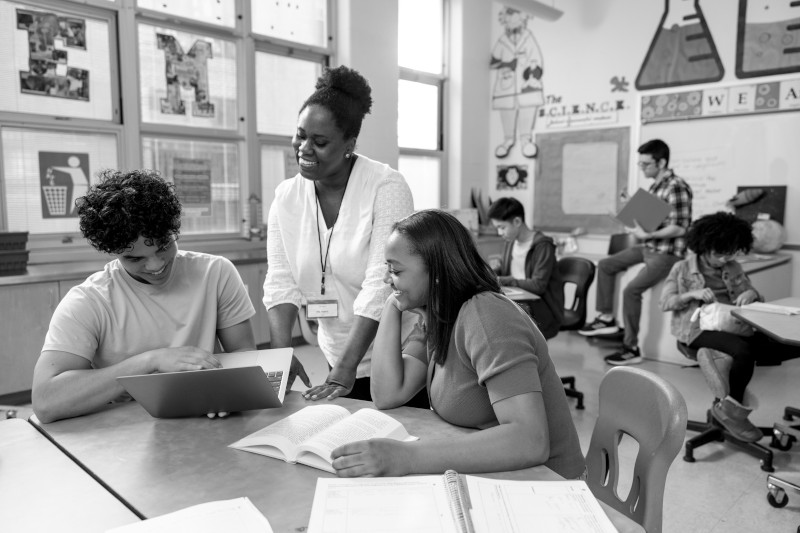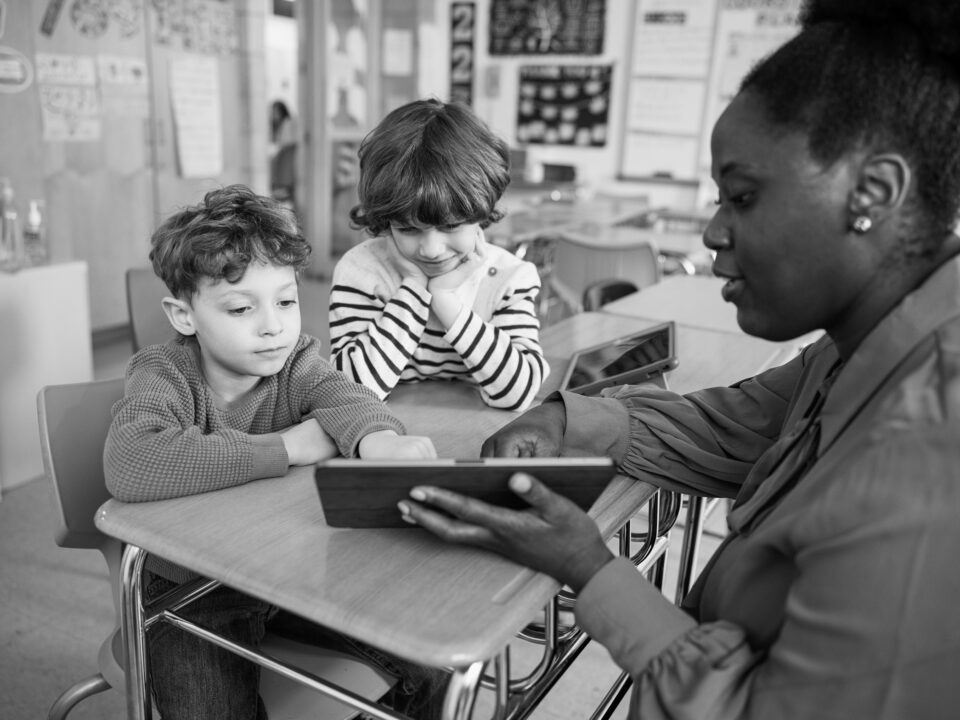- Sales & Support
- +61 2 4225 9698
- [email protected]

Start Planning – Build a Strong Community of Readers in 2021!
November 6, 2020
How to Encourage More Reading and Prevent the Summer Slide
November 24, 2020Strategies for Extending Students in the Classroom

As we near the end of term, we begin to look at new ways of getting students back on track and ready for 2021 after the disruptions we’ve experienced this year.
We know teachers are faced with a variety of challenges in schools today. There’s administration work, preparation of lesson sequences and resources and the ongoing monitoring of student wellbeing and academic progress with assessment, interviews and reporting. This year, that has been amplified with the transition and subsequent return from remote learning. Amongst all this, we consistently must be aware of and adapt to the needs of individual students, their learning styles and level of ability to ensure we can challenge them at the right level and create a pathway for success and mastery.
Here, we’ll examine some methods in identifying gifted students and some strategies that may assist in teaching these students. We’ll also discuss students who may need extra support and differentiated instruction.
Identifying Students with High Potential
For many teachers, identifying students that need extension, as well as those that need support can be a comprehensive process. Much of it can stem from general observations of the students, diagnostic information from school counsellors, learning and support teachers, reports from previous teaching staff and of course assessments conducted in the classroom to identify baselines and track progress.
Defining a gifted student can be quite subjective but there tends to be a level of consensus with the following aspects. Gifted students will often have high levels of alertness, larger vocabularies, great memory and recall, an increased sense of curiosity and comprehend complex ideas more fully, learning more rapidly than their peers.[1]
When we observe traits like this in the classroom, the first step is to confirm or identify the level of ‘giftedness’, almost as if we were finding the baseline and then taking steps to move forward with how to challenge and extend the student.
Efficient and accurate assessment of giftedness in students requires the use of multiple assessment tools, including data from both ability and achievement tests. Achievement tests such as NAPLAN, Star Reading and summative assessments in class attempt to measure how much students have learned measuring performance against curriculum or outcomes. Ability or aptitude tests attempt to measure a student’s abstract, critical and logical reasoning abilities; that is, a student’s capacity to learn, independent of what has been achieved.[2] There are various resources available and often various inventory checklists can assist with this identification process.
Striking a balance between these two assessments and ensuring students are continuously monitored allows for greater adaptive practice moving forward, key to which is of course differentiation.
Differentiation in Action

At its core, differentiation is the effort of a teacher to respond in their instruction to the variability among learners in the classroom making it very relevant to the discussion around gifted and talented students. Even within streamed classes there will be variation of learning and knowledge amongst that student group which requires differentiation. There are many different ways that a teacher can differentiate across the classroom but the big 4 are: Content, Process, products, Learning environment.[4]
- Content – what the student needs to learn or how the student will get access to the information; and some examples may be:
- Using reading materials at varying readability levels.
- Using spelling or vocabulary lists at readiness levels of students.
- Presenting ideas through both auditory and visual means
- Process – activities in which the student engages in order to make sense of or master the content Some examples are:
- Using tiered activities through which all learners work with the same important understandings and skills, but proceed with different levels of support, challenge, or complexity.
- Varying the length of time a student may take to complete a task in order to provide additional support for a struggling learner or to encourage an advanced learner to pursue a topic in greater depth.
- Products involve culminating projects that ask the student to rehearse, apply, and extend what the student learned in a unit. Some ways of differentiating products might include:
- Giving students options of how to express required learning (e.g. write a letter or develop a mural with labels).
- Learning environment – the way the classroom works and feels. Some ways to differentiate the classroom may be to:
- Making sure there are places in the room to work quietly and without distraction, as well as places that invite student collaboration.
- Providing materials that reflect a variety of cultures and home settings.
- Setting out clear guidelines for independent work that matches individual needs.[5]
Flexibility is at the heart of differentiation in the classroom – a differentiated teacher is continually seeking ways to modify and tweak the classroom and their teaching strategy to meet student needs. It also requires a lot of problem-solving work – something which takes time and practice to master. It is also important assessment and instruction are intrinsically tied to one another and therefore differentiated instruction is linked to assessment. We cannot know where to differentiate if we don’t know about from where our students are starting from.
The Needs of Students
Education departments in each state and territory are likely to have their own policy and resources to assist teachers in identifying and teaching gifted, or high potential students. The general consensus from the research indicates that gifted students need:
- challenging learning with greater depth and complexity
- they require scaffolding and structure in learning to help manage the demands of cognitive load
It is important to note that explicit teaching and guided inquiry are just as necessary for gifted students as for all students. Teaching practices should align the challenge, complexity, depth, and pace of learning with the learning needs of gifted students.
Specific strategies may include curriculum acceleration, extension, and enrichment learning. Many teachers may find it is easier to engineer groups based on skill levels and student needs to make differentiation easier.
Grouping students can help teachers to deliberately focus their efforts and supports differentiation. Grouping practices may vary but they should be purposeful, flexible, and equitable. Ideally based on formative and diagnostic assessment. Grouping students means you may allow more time for extension which can deepen student knowledge and skills. Extension classes offer the opportunity for like-minded, like-ability students to work together on challenging learning or skill development that may not be offered elsewhere.
Keep in mind, it’s important to look for enrichment opportunities outside of the classroom. Enrichment activities can be found at a school level or in the local community too. These activities should give students opportunities to learn something new in an area of natural ability, engage with complex information, abstract ideas, or advanced skills, learn at a fast pace with little repetition and attain new insights, information or skills. It could include music and vocal tuition, drama, sports clinics, science, writing and maths competitions, programs at libraries and museums and university acceleration programs.[6]

Employing a Daily Challenge
One of the key challenges for instructing gifted or advanced students in a mixed ability classroom especially is ensuring that we are providing consistent challenge to the student as well as regular learning. For the advanced student, if they are consistently provided with work that is too easy and of which they already have a clear understanding they can often become bored, disengage with the learning and perhaps even become a distraction to other students. We want to ensure that all students are provided with consistent challenges to their knowledge base as well as their cognitive stretch.[7]
Providing daily challenge for advanced or gifted students is well known strategy that has been shown to keep these students engaged in the classroom and learning. Outlined below are 4 adjustments you can make to provide daily challenge to the gifted students in classroom without creating too much additional work for yourself:
- Level of Abstractedness – This can be achieved by modifying the approach to task design and the types of questions posed to the gifted student. Research found by Davis and Rimm in 2004 found that for gifted students it is important that they are working in the top 3 areas of the Bloom’s Taxonomy as seen on the slide. We really want our gifted students to be working in the evaluation, synthesis and analysis section wherever possible.

- Pace – setting tasks at differing paces for gifted students is a simple way to differentiate and provide challenge for them. The key to successfully varying pace is to pre-assess students and to be continually formatively assessing students along the way. We need to ensure that the pace that we’re setting the gifted student isn’t so fast that they are not learning but also to determine what students already know and how quickly they are grasping new knowledge, skills and conceptual understanding, with an aim to reduce the amount of unnecessary repetition and practice. Both forms of assessment – summative and formative have also been discussed in our previous Webinar, so feel free to reach out and ask for that to be sent through if you don’t already have access to it.
- Degree of Complexity – increasing the degree of complexity involves making a task more interconnected with other ideas can increase the rigour of the thinking required from students. We extend students when we ask them to think about multiple ideas and the connections between these ideas, rather than asking them to engage with one idea at a time
- Accelerative Options – Accelerative options are any learning material that offers above-grade material or access to this material. For many gifted and talented students, there is only so much differentiation, extension and enrichment that is possible before they genuinely need to explore and learn above-level material. [8] Renaissance has several programs that would assist in providing acceleration to advanced students with minimal disturbance to the classroom. For numeracy, Freckle, which begins with a short placement test- we would expect advanced students to be placed high, then students engage with maths practice at their level and will increase in difficulty as the student progresses.
Models of Giftedness
Renzulli’s Three Ring Concept[9] and Gagne’s Differentiated Model of Giftedness and Talent[10] are two of the most commonly referenced and can clarify some points about what it means for a student to be gifted. One such method that stems from Renzulli’s research is the compacting of the curriculum. Anecdotally, this has been something as simple as showing a student a textbook of math problems and having them to identify a problem they don’t understand – that’s where instruction would start from.
A more formalised version would allow for pre-assessment of all students against a set of outcomes with a minimum standard of expectation. Then based on the results, identify the students who may benefit from compacting the curriculum. Covering more in less time with modified learning, then applying saved time to extension, enrichment or revision.
Remember regardless of whether a student needs extension or intervention and support, regular feedback and ongoing monitoring is essential.
Finding the Gaps
When teaching struggling students and trying to extend them an effective strategy may be to do some really good groundwork into finding the gap in the students understanding and then providing instruction from there. This can feel like going “going back to basics” but it can be a really effective strategy for struggling students. If a student doesn’t have a strong foundational understanding of phonics – asking them to read aloud a passage of Shakespeare is going to be a impossible. Whilst this takes some extra effort, this is certainly worth it. Often skipping ahead to where a student “should” be can create a situation where a student is left behind in key learning areas that are foundational for future areas of learning. You could absolutely use some of the strategies talked about in our previous Webinar about Numeracy success to collect information about your students, identifying weak areas as well as strengths. The instructional planning report in both Star Reading and Star Maths can provide guidance not only about where students are at in terms of their understanding of Maths and Literacy concepts but also some really clear next steps in terms of providing instruction at the students’ level.
Additionally, thinking about the students learning styles and needs can help to address the gaps in a student’s knowledge. For example, if a student has difficulty learning by listening then providing visuals on the board or asking the student to take notes and highlight important sections may assist them to absorb the core lessons you are teaching. If some students struggle expressing verbally, perhaps alternate forms of information sharing may be the way forward such as demonstrations, maps or a photo essay.
Co-Teaching Formations
Sometimes it’s not only about differentiating the content that has been provided to students, but also how it’s provided. In previous webinars we’ve discussed scaffolding, learning styles and managing the cognitive load but often the delivery of content by the teacher themselves, or specifically the strategy of team teaching is overlooked. The strategy is gaining more traction, especially in schools that operate cross curricular units of study or cluster classes, for example teaching HSIE and English across one uniform unit or teaching a large cluster of like-minded or ability students. When it comes to team teaching, various formations can be employed dependant on the content and the needs of the students.

The diagrams outline some of the ways in which two teachers, or a teacher and support staff member might alter the delivery of content to suit various skill sets and abilities.[11] It’s by no means an extensive list but some food for thought as we begin planning for 2021 and consider how we might adjust teaching for various needs.
Working with Students with Diverse Learning Needs
Finally, when we are working with lower ability students, or students with learning difficulties, remember to consider what others are doing. We’re lucky we get to speak to so many different schools who share their experiences and tips. Look for options and browser add ons in programs that could alter the colour and font of the webpage for students with dyslexia for example. Star Reading allows for extension of time or a lower starting level for students who require it. If you have any accommodations that you use with Renaissance programs or in the classroom in general, please be sure to share them – we want to create a community of that supports each other and learns from each other!
Referencing:
[1]https://www.cese.nsw.gov.au//images/stories/PDF/Revisiting_gifted_education.pdf
[2] https://www.nagc.org/resources-publications/gifted-education-practices/identification
[3] https://education.nsw.gov.au/teaching-and-learning/professional-learning/teacher-quality-and-accreditation/strong-start-great-teachers/refining-practice/differentiating-learning
[4] https://resilienteducator.com/classroom-resources/examples-of-differentiated-instruction/
[5] https://www.readingrockets.org/article/what-differentiated-instruction
[6] https://raisingchildren.net.au/preschoolers/play-learning/gifted-talented-children/gifted-talented-programs#:~:text=Gifted%20and%20talented%20programs%20offer,university%20or%20museum%20holiday%20programs.
[7] https://www.growingupgreatness.com/posts/2019/2/21/how-to-design-learning-experiences-for-gifted-students
[8] https://www.cecv.catholic.edu.au/getmedia/0d923109-6fb2-4f32-a2e6-c437073dfccf/Gifted-and-Talented-handbook.aspx?ext=.pdf
[9] https://education.nt.gov.au/__data/assets/pdf_file/0011/257960/Gifted-and-Talented-Education-policy_Renzulli-model_Appendix-8_EDOC2016-7107.pdf
[10] https://docs.education.gov.au/system/files/doc/pdf/gifted_talented_education_module1_early_childhood.pdf
[11] Treahy, D., & Gurganus, S. (2010). Models for special needs students. Teaching Children Mathematics, 16(8), 484-490. Retrieved November 16, 2020, from http://www.jstor.org/stable/41199522



